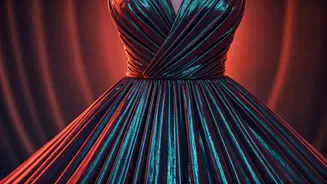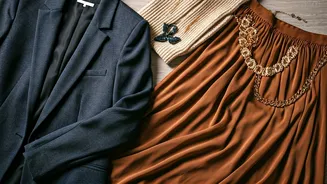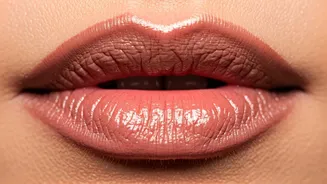Initial Spark: Appearance Matters
The initial attraction in many relationships often starts with physical appearance, a fact supported by various studies. This first impression is crucial.
Society, influenced by media and cultural norms, often emphasizes physical attractiveness. This can influence who we initially choose to approach and potentially date. While the importance of looks can sometimes feel superficial, it's a fundamental aspect of human interaction. The way someone presents themselves can signal various things like self-care, confidence, and how they perceive themselves, all of which contribute to initial attraction. Moreover, our brains are wired to rapidly assess potential partners, and initial visual cues often guide this assessment. This first assessment isn't the sole determinant of a lasting connection but acts as the starting point for developing deeper relationships. The role of appearance is undeniable in the first meeting; it is often the first 'conversation' before words are even exchanged. It offers a base for further interaction. This means that, at least initially, how one looks can significantly impact their dating prospects.
Beyond Looks: Inner Qualities
While initial attraction may be fueled by appearance, it's crucial to acknowledge the significance of inner qualities in the development of a long-term, healthy relationship. Characteristics like kindness, intelligence, humor, and empathy are essential. These intrinsic traits allow for a deeper connection and foster emotional intimacy. Relationships built solely on looks often lack the depth needed to withstand the test of time, the stresses of life, and the inevitable changes. People often seek partners who align with their values and offer emotional support. Emotional compatibility is a critical factor for a fulfilling partnership. Many individuals are seeking a balance between physical attraction and personality. Finding someone who complements their character, shares similar values, and makes them feel understood is often a top priority. Moreover, mutual respect and trust are cornerstones of any healthy relationship, and these qualities are often fostered by shared experiences and a deeper understanding of one another's character. Inner qualities ultimately determine the sustainability and quality of the relationship.
Societal Influence: The Pressure
Societal norms and media representations significantly influence how we perceive physical attractiveness. These pressures can impact self-esteem and create unrealistic expectations. The media, often showcasing idealized images, can make it challenging for people to accept their natural appearances or to believe they are 'attractive' enough. This pressure is amplified by social media, where curated images and filters are common. People may feel compelled to conform to certain beauty standards, potentially undergoing cosmetic procedures or altering their appearance to fit the mold. The focus on external validation can lead to anxiety and self-doubt. These external pressures are not new but have been intensified in today's world. This can lead to unhealthy behaviors and an endless pursuit of an unattainable ideal. It's crucial for individuals to challenge these norms. The ability to accept oneself and appreciate one’s natural beauty becomes essential. Focusing on inner beauty and self-acceptance can provide a buffer against external pressures, promoting a healthier self-image and more genuine relationships.
Evolving Perspectives: Acceptance
There's a growing movement towards greater acceptance of diverse body types and appearances. This shift in perspective aims to challenge traditional beauty standards and promote inclusivity. Many individuals are now embracing natural looks and advocating for more realistic portrayals of beauty in the media. This movement has been amplified by body positivity, where individuals are encouraged to celebrate their natural selves. The rise of diverse representation across media platforms showcases a wider variety of faces and body shapes, offering visibility to communities that were previously underrepresented. This creates more positive role models. Embracing natural beauty and self-acceptance fosters healthier relationships. This focus on inclusivity shifts the emphasis from outward appearance to inner qualities and personal expression. This shift signifies a cultural transformation where individuals feel empowered to define their beauty, which enables them to look at relationships differently, focusing more on connection rather than superficial standards. This also influences the way individuals form relationships.
Balancing Act: A Conclusion
Successfully navigating modern dating requires a balance between acknowledging the role of physical attraction and prioritizing deeper connection and compatibility. While initial appearance often serves as the initial attraction, it's the inner qualities that truly build lasting relationships. Understanding the influence of societal pressures and cultivating self-acceptance is essential. Recognizing that beauty comes in various forms is fundamental to forming healthy relationships. Building a strong relationship depends on respecting shared values. This balance allows individuals to form authentic relationships and make better choices, leading to more fulfilling romantic lives. Ultimately, a balanced approach emphasizes the importance of both appearance and inner qualities. It encourages individuals to appreciate both themselves and their partners for who they are on both the outside and inside.










